Lime green is one of the most popular colors among people who love nature.
Green plants and flowers are beautiful and colorful. They can make us feel happy and give us energy just by looking at them.

Lime green plants, specifically, are beautiful to look at, and can even be useful in certain situations.
They keep our homes clean, supply us with fresh air and oxygen, and some of them can be used to develop medicine. A few of them are poisonous.
While most plants reflect the color green in some form or another owing to their leaves and stems, we will be focusing on plants and flowers that are primarily colored lime green in this article.
Why Are Most Plants Green?
For those who have long forgotten everything they learned in high school biology, it is the chlorophyll in a plant’s cells that gives its leaves and stalks their green hue.
Chlorophyll is a compound made composed of carbon, hydrogen, oxygen, nitrogen, and phosphorus that absorbs solar energy and converts it to food for the plant.
This process is known as photosynthesis and can be used to create carbohydrates, proteins, fats, vitamins, and minerals.
Photosynthesis occurs when plants absorb light energy from the sun and convert it into chemical energy. This allows plants to both grow and reproduce.
So, in summary, chlorophyll is the reason that practically every plant on the planet has some sort of green in it, even if the flowers or fruit it produces are different colors.
Types of Lime Green Plants and Flowers
There are many types of lime green plants and flowers around the world, and we are going to be looking at a couple of them in our list below.
We will be closely examining their appearances, attributes, and if/why you should own one of your own.
Here are 15 lime green plants to look at.
Let’s get started.
1. Lime Tree (Citrus Aurantifolia)

The lime tree is native to South America but is now found throughout the tropics and subtropics. It is also commonly grown in gardens because of its attractive appearance. The lime tree is an evergreen shrub that grows up to 15 feet (4.57 m) tall.
Its branches are covered with small, bright green colored leaves that are arranged alternately along the stem, alongside several limes sprouting along the branches, depending on the time of year.
2. Lemongrass (Cymbopogon Citratus)
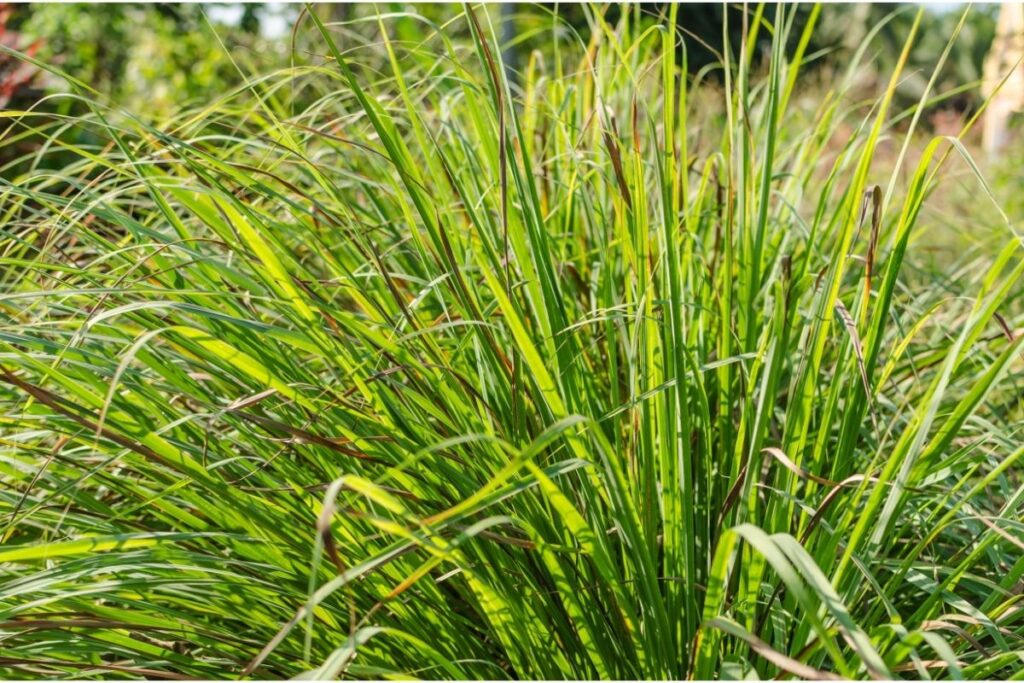
This is a tropical grass that is native to India, Sri Lanka, Indonesia, Malaysia, Thailand, Australia, New Zealand, Madagascar, Africa, and other parts of Asia.
Lemongrass is widely cultivated in warm climates worldwide due to its strong aroma and flavor. The grass itself is a light green color and can sprout at lengths up to 10 feet (3.05 m) in the right climate.
It is often used as a flavoring agent in cooking, especially in Asian cuisine. Lemongrass has a very pungent smell, which makes it ideal for use in perfumes, soaps, and shampoos.
3. Mint (Mentha)

Mints are members of the mint family, Lamiaceae, which includes sage, basil, oregano, thyme, rosemary, lavender, lemon balm, chamomile, and others.
They are perennial herbs that grow in temperate regions of the world. The leaves are small and rough and are colored a bright green hue.
There are over 300 species of mints, all of which contain menthol, a natural cooling substance that provides relief from pain and fever.
4. Peppermint (Mentha × Piperita)

Peppermint is a hybrid between two other mints: spearmint and watermint.
It was first developed by crossing spearmint with water mint, creating a new variety that had more peppermint oil than either parent. Peppermint is a hardy perennial herbaceous plant that grows 1-3 feet (0.30-1.10 m) high.
The leaves are opposite, oval-shaped, and pointed at the tip, and they are a green hue, very similar to the original mint plant. This plant blooms in late spring through early summer.
5. Moringa Tree (Moringa Stenopetala)

Moringa trees are indigenous to tropical areas of Asia, Africa, and Latin America. They are fast-growing trees that can reach heights of 50 feet (15.24 m).
The leaves are dark green and shiny, and they are usually about 8 inches (20.32 centimeters) long. The tree bears pods that contain seeds. These seeds are edible and nutritious.
6. Watercress (Nasturtium Officinale)
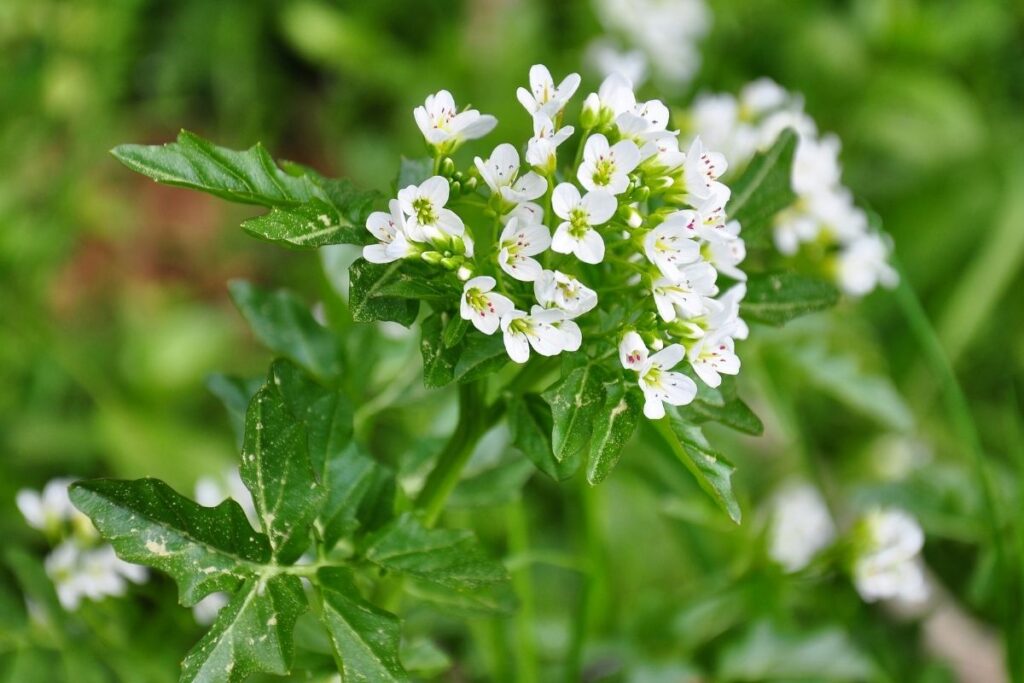
Watercress is a member of the mustard family, Brassicaceae. It is a biennial or short-lived perennial herb that grows 2-5 feet (60-150 cm) tall.
The stems are hollow and branched. Leaves alternate on the stem and consist of three leaflets. They are a circular shape and are a bright green color.
The flowers that bloom from the watercress plant are white and borne in clusters. The flowers are followed by round, flat, brownish fruits called siliques.
7. ‘Lime Green’ Winged Tobacco (Nicotiana Alata)
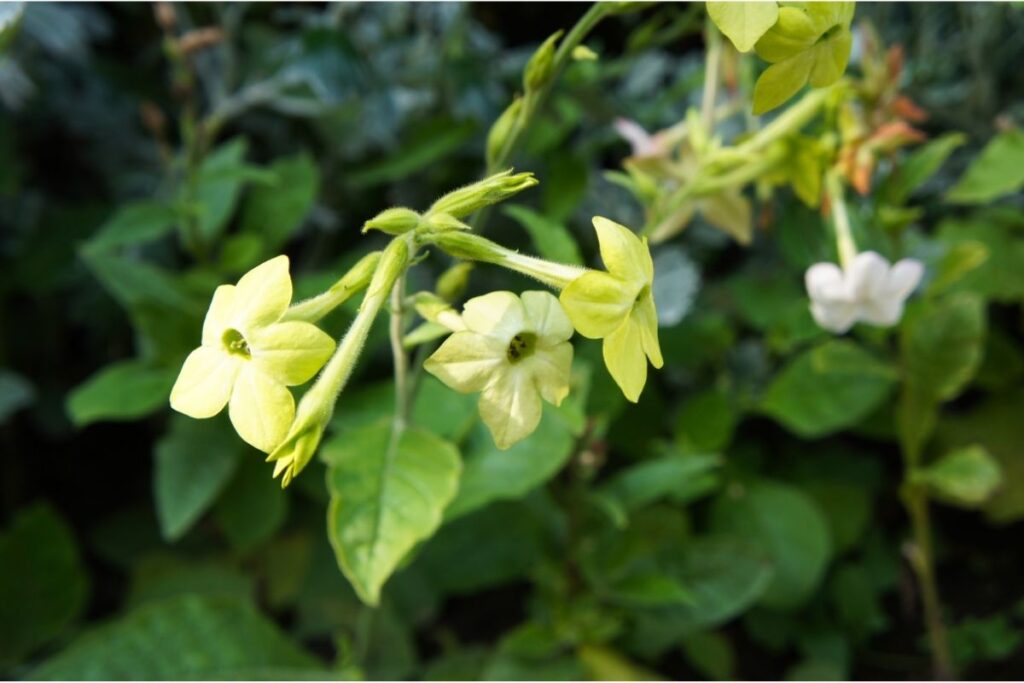
Winged tobacco is a popular ornamental plant that is easy to grow and requires little care. It is a perennial vine that can grow up to 10 feet (3.05 m) tall.
The leaves are heart-shaped, 6-12 inches (15-30 cm) long, and may be red, yellow, orange, or purple. The ‘Lime Green’ variation produces flowers that are yellowish-green colored.
The flowers are produced in racemes that hang down like a cluster of grapes. Each flower has five petals that are deeply divided into four lobes. The fruit is a capsule that contains many tiny seeds.
8. ‘Lime Marmalade’ Coral Bells (Heuchera)

Coral bells are an evergreen perennial shrub that is native to North America. It is also known as coralberry, coralbells, and coral hearts.
It is a low-growing, spreading, and clump-forming shrub that grows 3-6 feet (90-180 cm) tall. The small, narrow leaves have serrated edges.
Small, fragrant, yellowish-green flowers appear on the ‘Lime Marmalade’ variant during the summer months.
The flowers are followed shortly by blueberries. Coral bells are best grown in full sun in well-drained soil.
RELATED: Bells And Whistles: 16 Different Types Of Coral Bells
9. ‘Jordan’ Shirasawa Maple (Acer Shirasawanum)
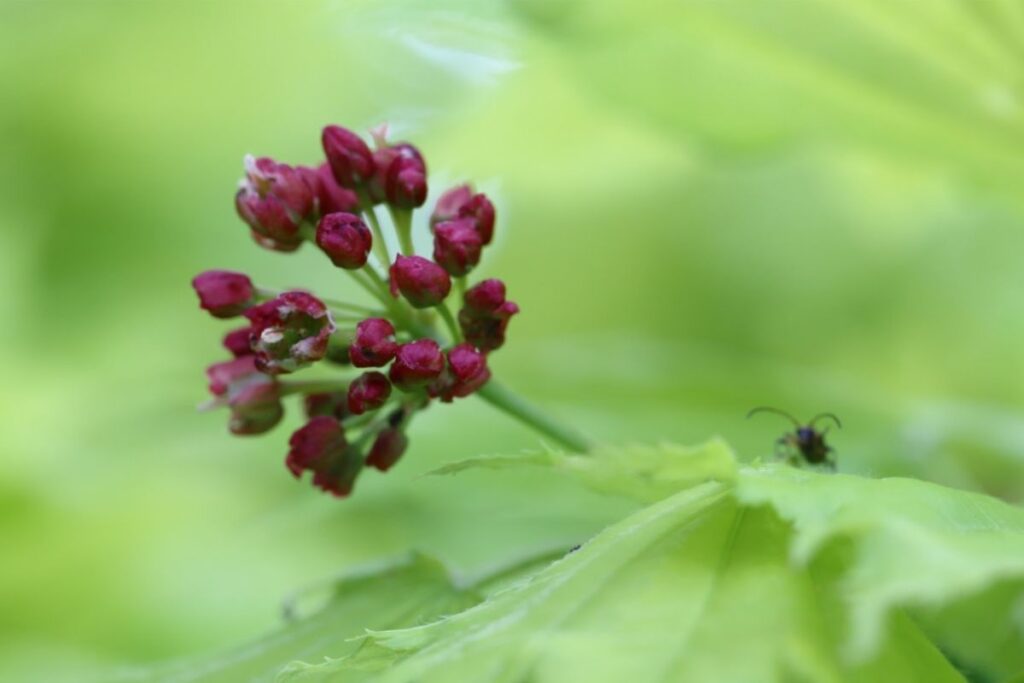
Shirasawa maple is a deciduous tree that grows 20-40 feet (6-12 m) high. It is native to Japan, China, Korea, Taiwan, and Russia.
Its common name comes from its Japanese originator, who named it after his hometown, Shirasawa, Japan. In English, this translates to “shirasu” meaning “white” and “wa” meaning “water”.
This tree produces large quantities of sweet sap when temperatures drop below freezing. When the temperature rises above 40 degrees Fahrenheit (4.44 degrees Celsius), the sugar content decreases.
10. Martin’s Spurge (Euphorbia x Martini)
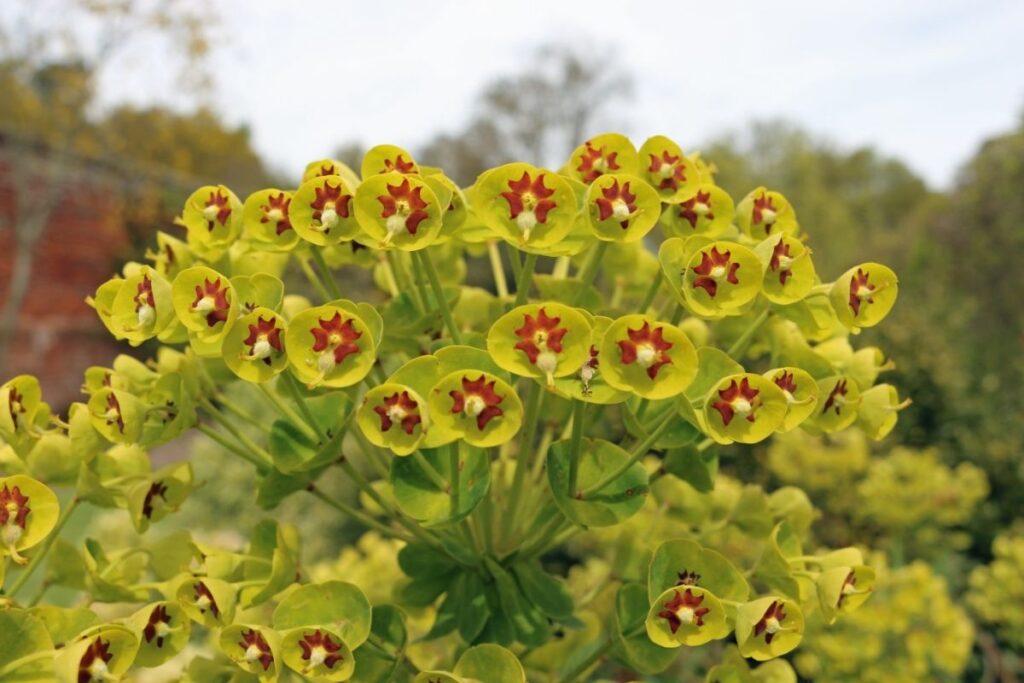
This euphorbia is a perennial herbaceous plant that can grow anywhere from 4-8 feet (120-240 cm) tall. It has smooth, gray bark and glossy, dark green leaves.
The plant blooms from June to August, and the flowers are arranged in spikes and are bright yellow.
The plant is very easy to grow and does not require much attention. It will tolerate some shade but prefers full sunlight.
11. ‘Coconut Lime’ Coneflower (Echinacea Purpurea)

The coconut lime coneflower is a hardy annual herb with beautiful daisy-like flowers colored white and green.
It is native to eastern North America and northern Mexico. It is commonly used for landscaping because of its attractive foliage and flowers.
The plant thrives in sunny locations with average rainfall. It needs regular watering during dry periods.
12. ‘Green Jewel’ Coneflower (Echinacea Purpurea)

‘Green Jewel’ coneflower is a hybrid form of Echinacea purpurea and Echinacea paradoxa. It is a vigorous growing plant that grows 1-2 feet (30-60 cm) tall.
The plant has thick, shiny, dark green leaves that are slightly hairy.
Unlike the ‘coconut lime’ variation of the coneflower, this plant bears numerous bright yellowish-green flowers throughout the season.
These plants do best in full sun and should be watered regularly during hot weather.
13. ‘Green Lace’ Primula (Primula x Polyanthus)

‘Green Lace’, primrose, or primula is a flowering plant in the genus Primula. It is one of about 200 species of Primula found worldwide.
The species was first described by Carl Linnaeus in 1753. It is a biennial plant with finely cut, oval-shaped leaves that are covered in fine hairs.
The stems are thin and upright, reaching heights of 30-50 centimeters, and the flowers that bloom are lime green on the outside of the petals, and bright yellow on the inside.
14. ‘Wasabi’ Coleus (Solenostemon Scutellarioides)

Coleus is a popular houseplant that originated in South America. It is now widely cultivated around the world. It is an evergreen perennial plant that grows 2-3 feet (60-90 cm) tall.
The leaves are heart-shaped and deeply lobed. They are usually bronze or red, but in this variation, they are lime green.
The plant bears clusters of tiny, tubular, scarlet red flowers at the end of long stalks.
15. Lamb’s Tail (Chiastophyllum Oppositifolium)
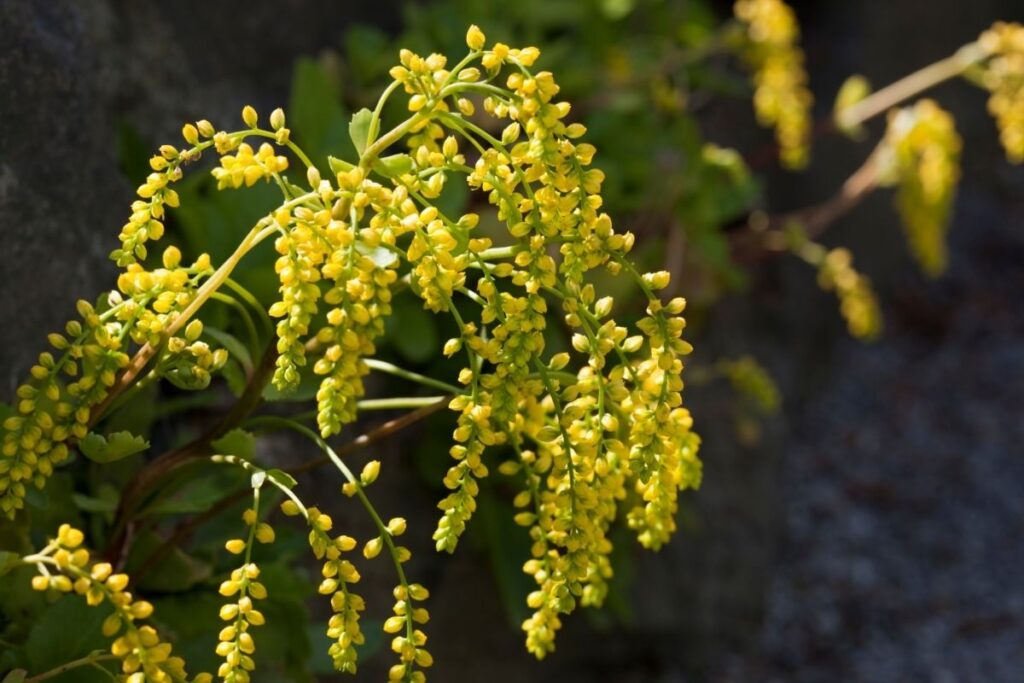
Chiastophyllum is a member of the family Euphorbiaceae. Chiastophyllum oppositifolium is a small shrub that grows up to 3 feet (0.91 m) tall.
The plant bears clusters or racemes of white or pale blue flowers. The flower buds open into star-shaped, five-petaled blossoms. The fruit is a capsule containing many seeds.
Final Thoughts
In conclusion, I hope our guide to lime-green plants has helped you learn something new.
Lime green plants are beautiful and interesting, and sometimes, even useful. They provide oxygen, help purify water, some are also used in medicine and food production.
Editor’s Recommendations
19 Different Types Of Brown Plants (Including Photos)







